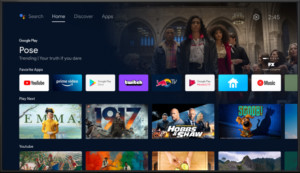How Have Televisions Changed Over Time?
The television has become a ubiquitous presence in homes worldwide, serving as a primary source of entertainment and information. But the sleek, high-definition screens we know today are a far cry from the bulky, rudimentary devices of the past. This article explores the fascinating evolution of television technology, from its nascent beginnings to the sophisticated smart TVs of the 21st century.
From Mechanical Marvels to Electronic Giants: The Early Years
The journey of television began in the late 19th century with the development of two crucial technologies: the cathode-ray tube (CRT) by Karl Ferdinand Braun in 1897 and the mechanical scanner system by Paul Nipkow in the 1880s. These innovations laid the foundation for the first televised images.
The early 20th century witnessed a brief but significant rivalry between mechanical and electronic television systems. John Logie Baird championed mechanical TV, utilizing Nipkow’s scanner system to transmit low-resolution images. Concurrently, Philo Farnsworth in the US and Kenjiro Takayanagi in Japan independently developed electronic television using CRT technology, offering superior image quality and affordability. Farnsworth’s 1927 demonstration of electronic TV marked a turning point, paving the way for the future of television broadcasting.
The Dawn of Broadcasting and the Rise of Color
The late 1920s and 1930s saw the emergence of television broadcasting. In 1928, the Federal Radio Commission approved the first broadcast from station W3XK in Maryland. While initial broadcasts were limited in scope, the National Broadcasting Company (NBC) launched regular programming in 1939, ushering in a new era of entertainment.
World War II temporarily halted the progress of commercial television, but the post-war era witnessed a resurgence. The 1950s brought the advent of color television, with NBC’s first color broadcast in 1954. Although initially expensive, color TV gradually gained popularity, transforming the viewing experience.
Cable, Digital, and High-Definition: A Revolution in Quality
The 1960s marked the dawn of cable television, expanding broadcasting reach beyond metropolitan areas. Initially hampered by regulations, cable TV eventually flourished, introducing premium channels and diversifying content.
The late 20th century saw a shift from analog to digital television broadcasting. Digital signals offered superior image quality and reduced susceptibility to interference. This transition culminated in the US switch to all-digital broadcasting in 2009.
Riding on the heels of the digital revolution came high-definition television (HDTV) in the late 1990s. HDTV provided significantly sharper images and a more immersive viewing experience, rapidly becoming the standard for television broadcasting and content creation.
The Smart TV Era: Convergence and Connectivity
The 21st century ushered in the era of smart TVs, seamlessly integrating the internet and television. Smart TVs enable viewers to stream online content, access a vast library of apps, and engage in interactive experiences, blurring the lines between televisions and computers.
The Future of Television: Innovation Continues
From the first flickering images to today’s immersive displays, the evolution of television is a testament to continuous innovation. With advancements like transparent OLED and MicroLED screens on the horizon, the future of television promises even more captivating and integrated viewing experiences. The journey of television, from a scientific curiosity to a cornerstone of modern life, is a story of remarkable transformation.








